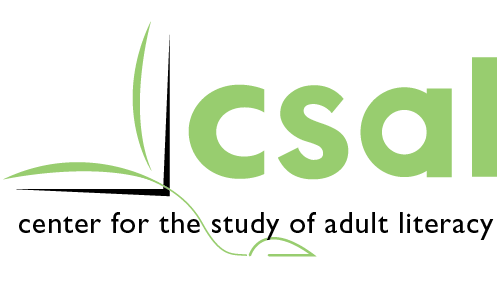Final Executive Summary
Every year, nearly 3 million Americans enroll in adult literacy programs to improve their basic skills and some estimates suggest that the need is even greater. However, we do not completely understand their underlying reading-related strengths and weaknesses, nor do we know the best curricula and teaching approaches to help them reach their reading goals. The focus of our center was to address these areas by attending to the following goals: 1) To collect data on the underlying cognitive and motivational processes that contribute to or impede the reading development of adults who read between the 3.0 and 7.9 grade equivalency levels; 2) To develop and evaluate a multiple component reading intervention for adults who read between the 3.0 and 7.9 grade equivalency levels; 3) To design and collect data from supplemental studies that are aligned with the overall goals of CSAL and are relevant to significant issues in adult education; 4) To engage in national leadership activities that serve the needs of adult education researchers, policymakers, practitioners, and stakeholders; and 5) To disseminate findings of this work.
Goal 1: Data was collected on 37 different measures on 544 people. Their performance on our extensive test battery indicated that they were deficient in all tested domains. Their mean grade equivalency performance ranged from a low of 1.0 GE (Blending Words and Phoneme Isolation subtests of the CTOPP) to a high of 6.7 GE on sight word reading (TIWRE). We found that while the tests were structurally valid, there was substantial variability across tests and even within some tests. A few of the tests showed low sensitivity, variability in sensitivity, and spikes in difficulty.
Goal 2: After spending the first 2.5 years on iterative development of our intervention, we conducted six feasibility classes in Years 3 and 4 and in years 4 and 5 we ran our pilot study.
Analyses from our feasibility and pilot studies indicated that compared to a business-as-usual group, we found intervention effects for the training of letter-sounds and sound combinations, word identification skills and perceived competence for those at low pretest levels, moderate intervention effects for multi-syllabic Challenge Words, Word Attack, and Reading Value, intervention effects on TABE reading performance and no significant intervention effects on any oral language outcomes, fluency, perceived difficulty, or comprehension.
Goal 3: We conducted over 20 additional studies on aspects such as pragmatic knowledge, memory, gender differences, digital literacy, academic background knowledge, interest, and reading profiles.
Goals 4 and 5: During the life of our Center, we presented updates, study results, and intervention descriptions at diverse venues, such as IES PI meetings, adult literacy conferences, reading researcher conferences, and meetings with OCTAE representatives, as well as publishing book chapters and journal articles. We have also sent “email blasts” to inform our subscribers of CSAL updates. In addition, we created and maintained a website. This website houses our web-based text repository for adult learners, resources for practitioners and policy makers, archived presentations, and information on the various aspects of our Center. The culminating activity for our Center was our National Convening, where panelists and attendees discussed the approaches and challenges of using digital instruction with adult learners, with a focus on the methods and priorities for building knowledge and evidence in the field.
